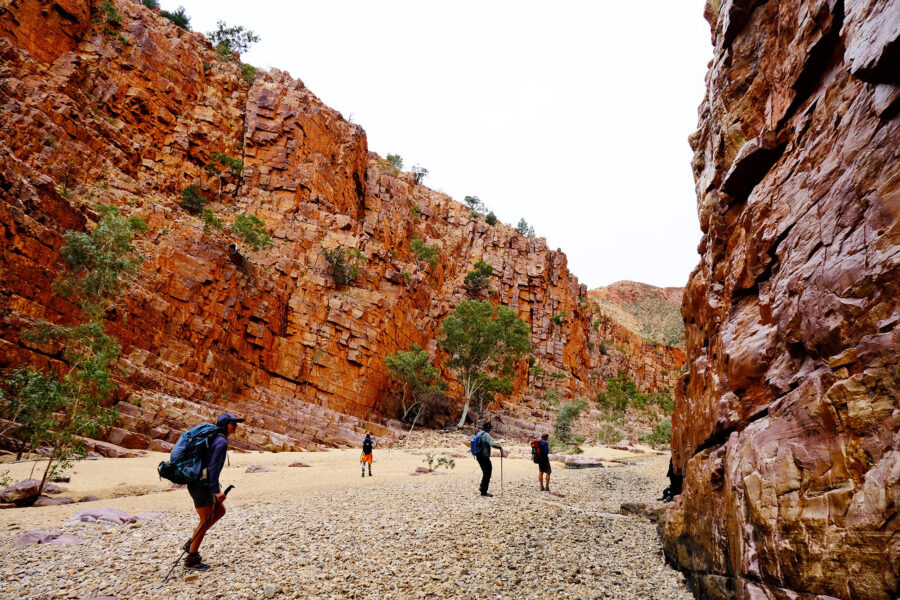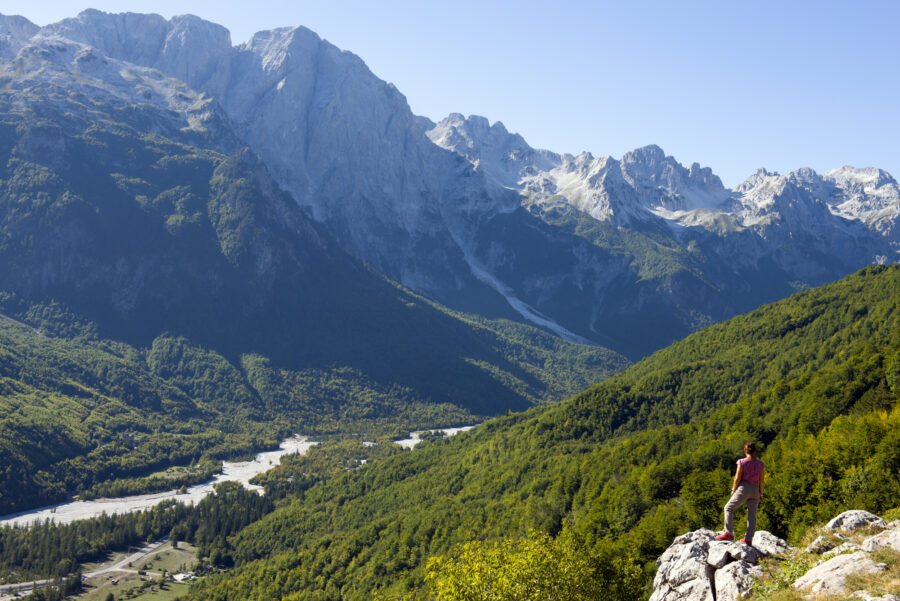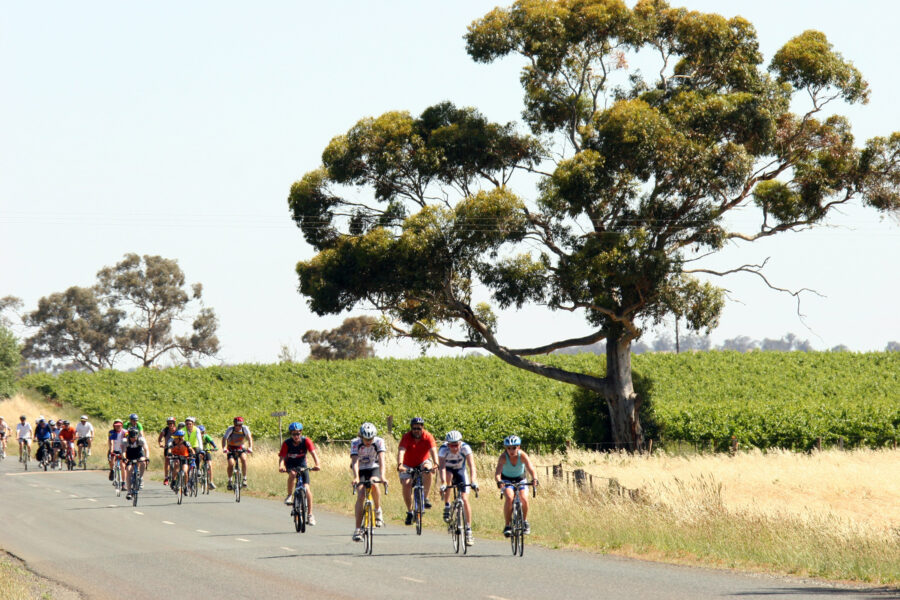Australia’s iconic lighthouses

AS THE ROMANTIC SYMBOLS of the nation’s rich maritime history, lighthouses have long captured the collective Australian imagination. These critical beacons stand tall to announce to passing ships the dangers that lie ahead; but they are also structures of beauty and symbols of isolation and strength.
Australia’s first lighthouse – Sydney’s South Head Signal Station – was erected in 1818 and commanded by Governor Macquarie. There are still more than 179 of them dispersed along harbours, islands, coral reefs, and beaches around Australia’s 36,735-km coastline. As technology improved throughout the 20th century, so did the need for human management. During the1990s many the lighthouses were automated and the abandoned keepers’ cottages were transferred to state-based National Parks and conservation agencies. Today many of these historic monuments are being transformed into bed and breakfast accommodation.
The Flagstaff Hill Lighthouse Lodge at Lady Bay is the newest addition to the lighthouse accommodation trail of Australia. This boutique lighthouse accommodation offers a unique experience where guests are invited to stay in the original master’s house and play light keeper for the night. “Lighthouse accommodations are a really special experience”, says Merran Fyfe at Flagstaff Hill Lighthouse Lodge. “The accommodation experience brings back the drama and romance of Australia’s maritime era.”
Lighthouse enthusiast and president of Lighthouses of Australia Denise Shultz says, “Lighthouses have a special magic. They are some of the oldest buildings in Australia and are closely tied to Australian history. They are marvels of engineering and architecture, human endeavour and perseverance.” Denise adds that lighthouse accommodation is unique because it puts you on the same wavelength as the light keepers. “It’s like being a part of the history,” she says.
Stay in a Lighthouse
NEW SOUTH WALES
Cape Byron
The Cape Byron Lighthouse was constructed in 1901 and stands at the most easterly point of the Australian mainland. Guests are invited to stay in the lighthouse keeper’s quarters and enjoy the spectacular views of Byron Bay’s coastline. Guests are welcome to choose from two cottages, both of which accommodate up to six people.
Smoky Cape
The Smoky Cape Lighthouse was completed in 1891 and boasts an unusual octagonal shape. Today, it is the most elevated lighthouse on the east coast and is surrounded by bushland and coastal views. At the Light Station Keepers Cottage B&B, accommodation is available for up to two couples in the head keeper’s house. Guests also have the option of staying in the two assistant keepers’ cottages, which can sleep up to six people.
Green Cape
The Green Cape Lighthouse was built in 1883 and was the first cast concrete lighthouse tower in Australia. It is also the tallest lighthouse in New South Wales. Guest accommodation is available in the two assistant keepers’ cottages which sleep up to six people.
Norah Head
Despite the modern renovations the Norah Head Lighthouse cottages have managed to keep their original feel of the lighthouse, which dates back to 1903. The accommodation is self-contained with three bedrooms equipped with modern amenities, including a gas log fire.
Sugarloaf Point Lighthouse
The Sugarloaf Point Lighthouse was constructed in 1875. It is historically recognised as the site of one of Australia’s biggest shipwrecks. In 1895 the Catterthun, en route from Sydney to China wrecked and suffered the loss of 55 lives. The accommodation offers guests three separate cottages to choose from.
VICTORIA
Cape Nelson
The Cape Nelson Lighthouse was completed in 1884, at a time when there were fears of a Russian invasion of the Pacific. The keeper manned a brass telescope to investigate suspect ships, in case they were unannounced Russian war ships. At the Light Station Keeper’s Cottages, guests are invited to stay in the actual keepers’ cottages.
Cape Otway
The Cape Otway Lighthouse was completed in 1848, making it the second lighthouse established on the Australian mainland. It was decommissioned in January 1994 after being the longest continuous operating light on the Australian mainland. At the keeper’s cottages of Apollo Bay, accommodation is available in two double studios or in the head keeper’s cottage that will sleep groups ranging from two to sixteen people.
Cape Schanck
The Cape Schanck Lighthouse was established in 1859, making it the second coastal light in Victoria. Today there is a museum in the old assistants’ quarters. The light station grounds offers two guest houses which can be booked by individual room or as a whole. Both these cottages have been residences of the lighthouse keepers.
Wilsons Promontory Lighthouse
The Wilsons Promontory Lighthouse was completed in 1859. It is the most southerly lighthouse on mainland Victoria. National Park and Wildlife Services offers dormitory-style accommodation for up to 27 people. Guests are expected to bring their own bed linens and food, which must be carried in on the 19.6-kilometre walk from Tidal River.
Point Hicks
The Point Hicks Lighthouse was first lit in 1890. The lighthouse is said to be haunted by the ghost of former Light Keeper Christofferson. Accommodation is available in the two assistant keeper’s cottages, each cottage can sleep up to ten people. There is also a bungalow suitable for a couple. Guests are expected to provide their own food.
Flagstaff Hill Maritime Village
The Lady Bay Lighthouse was originally constructed in 1854 but had to be relocated and reconstructed due to ineffective placement. The Lady Bay Lighthouses at Flagstaff Hill Maritime Village offers accommodation in the original master’s house.
TASMANIA
Cape Bruny
The Cape Bruny Lighthouse is the third oldest light station in Australia. It was erected in 1838 after numerous wrecks in the area. At the light station keeper’s cottage accommodation is available in one of the keeper’s cottages, which can house up to six people in three bedrooms.
Low Head Pilot Station
In 1805 the Low Head Pilot Station was erected, but the actual lighthouse was constructed in 1833. Four self-contained houses can sleep up to 13 couples. Guests are expected to supply their own food.
SOUTH AUSTRALIA
Cape Borda
The Cape Borda Lighthouse was built on Kangaroo Island in 1858. Its unique shape boasts the only square stone lighthouse in South Australia. Accommodation is available at this classic lighthouse location in three cottages. The light station can sleep up to ten people in various arrangements.
Cape du Couedic
Prior to the Cape du Couedic Lighthouse construction In 1909, the Kangaroo Island area was home to multiple tragic wrecks resulting in massive loss of lives. Accommodation is available in three restored lighthouse-keepers’ cottages, which have three bedrooms and can accommodate up to six people. Guests are expected to bring their own food.
Cape Willoughby
Cape Willoughby was first lighthouse erected in South Australia, in 1852. It lights the Backstairs Passage between Kangaroo Island and the mainland. Accommodation is available in two, five-bedroom cottages, each of which can accommodate up to ten people. Guests must bring their own food.
Troubridge Island
The Troubridge Island Lighthouse was completed in 1855 and was the second lighthouse built in South Australia. The stubborn lighthouse has managed to survive an earthquake, a fire and the constant erosion of its home island. This light station accommodates up to ten people. Guests must provide their own food and linen.
Point Lowly
The Lowly Point Lighthouse was erected in 1883. The light station offers two keepers’ cottages, which are owned by the Uniting Church. There are 29 bunk beds in each cottage. Guests are expected to bring their own food and linen.
WESTERN AUSTRALIA
Bathurst Point
The lighthouse was erected in 1900 on Rottnest Island. At the Bathurst Point light station accommodation is available in two of the keeper’s cottages. Guests are required to bring their own food.
Cape Leveque
The light station is now run by the local Bardi Aboriginal people, who also manage the Kooljaman Wilderness Lodge. Accommodation is available in cabins or tents. Guests must bring their own food and drinks.
QUEENSLAND
Cape Capricorn
The current Cape Capricorn Lighthouse was built in 1964. Self-contained accommodation for up to 12 people is available in one of the keeper’s cottages. Guests are expected to bring food.
NORTHERN TERRITORY
Cape Don
The Cape Don Lighthouse was constructed on the Cobourg Peninsula in 1917. The lighthouse was needed to light the passage between the peninsula and Melville Island as it was a route to Darwin. At the Cape Don Experience accommodation for up to 12 people is available at the light station.
RELATED STORIES




